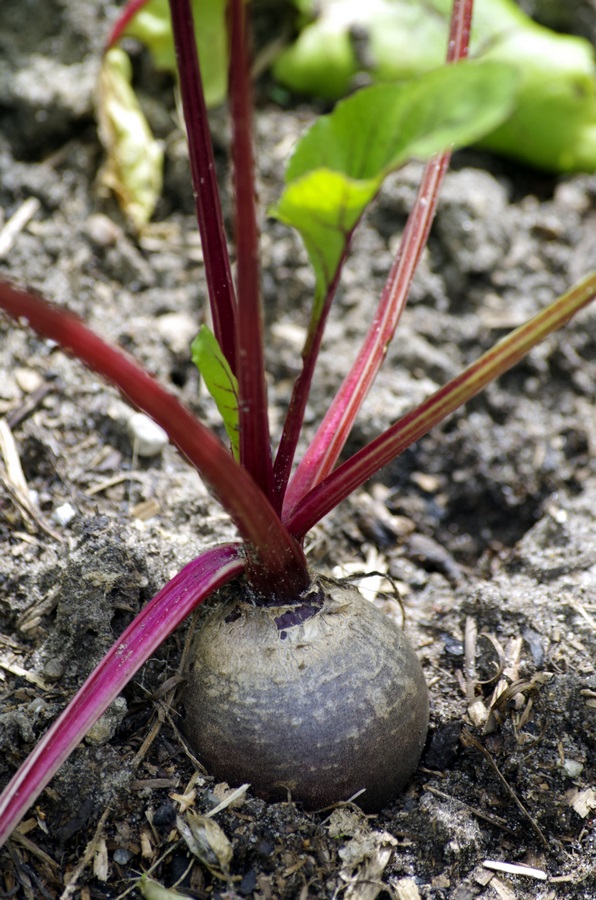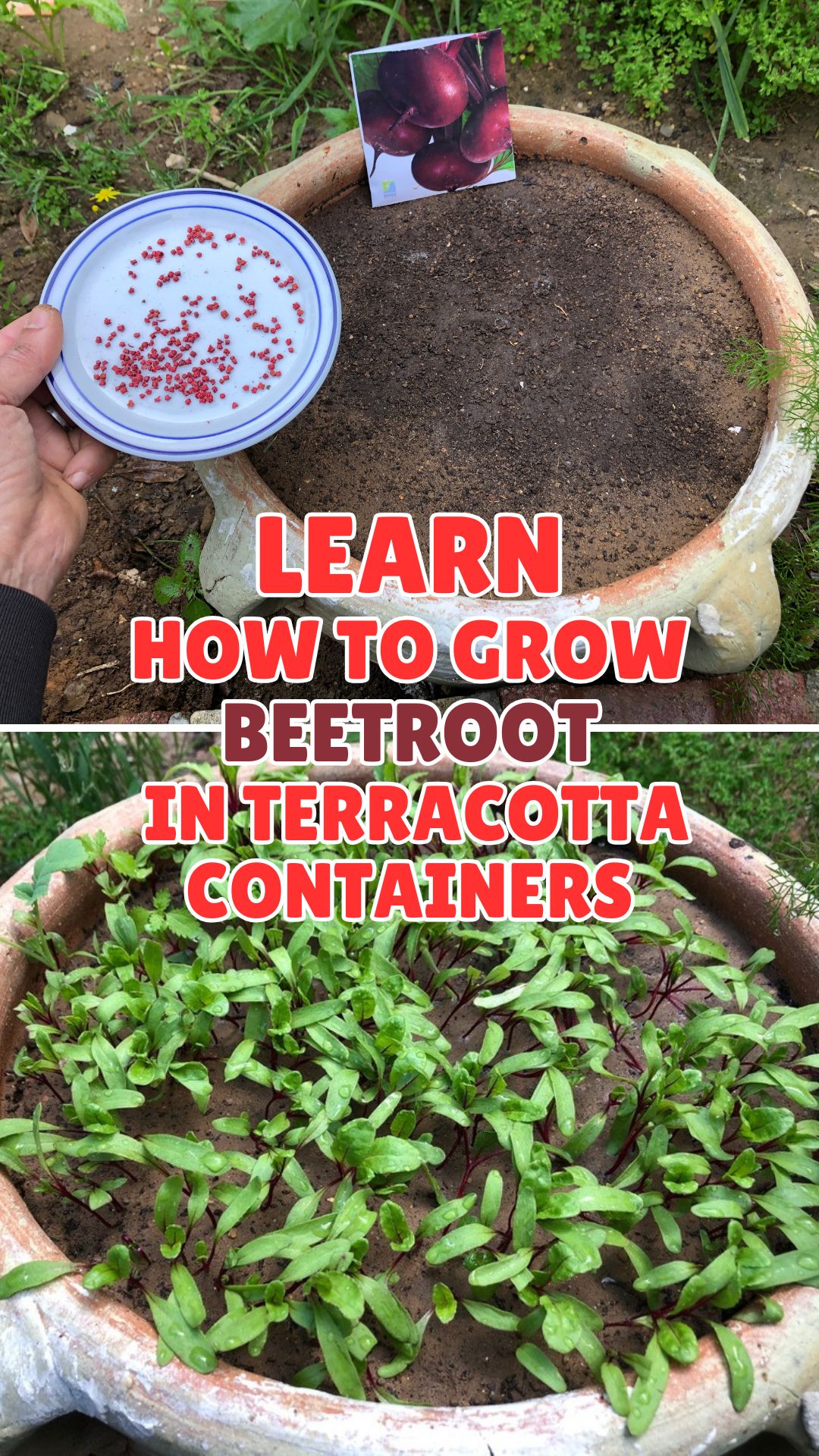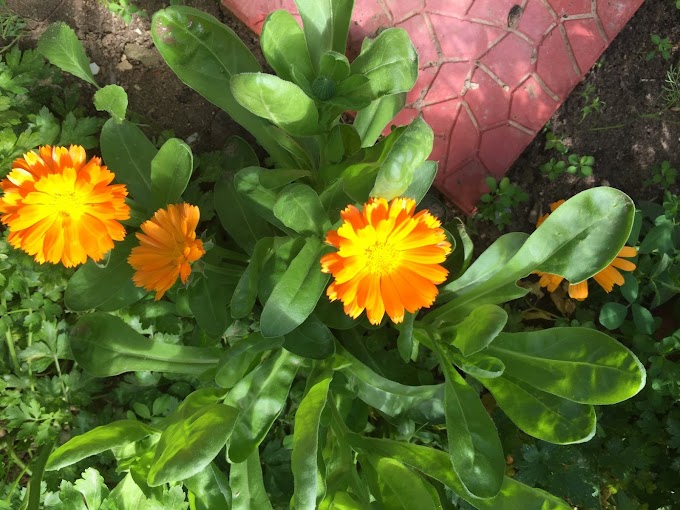Have you ever glanced at those vibrant, earthy beets at the farmer's market and thought, "I wish I could grow those myself? " Well, guess what? You absolutely can! And you don't need acres of land to do it. Today, we're diving into the wonderful world of container gardening and discovering just how easy it is to cultivate delicious beetroot right on your patio or balcony using terracotta containers.
Whether you're a seasoned gardener with years of experience or a complete newbie just getting your hands dirty for the first time, this guide is for you. Growing beetroot in terracotta containers is a rewarding and accessible project that brings the joy of homegrown freshness right to your doorstep. Ready to transform your outdoor space into a mini-vegetable garden? Let's get started!
The Magic of Terracotta (and Why It's Perfect for Beetroot)
Why terracotta, you ask? These beautiful, earthy pots aren't just aesthetically pleasing; they're also incredibly practical for growing certain plants. Terracotta is porous, which means it allows for excellent air circulation and helps regulate moisture levels in the soil. This is especially important for beetroot, which prefers well-draining conditions and doesn't like to sit in soggy soil.
Setting the Stage: Choosing Your Container and Soil
First things first, let's pick out the perfect terracotta container. You'll want one that's at least 12 inches deep and has drainage holes at the bottom. That depth is super important because beetroot needs room for its roots to grow fat and juicy underground. Those drainage holes allow excess water to escape and help prevent waterlogging, which can seriously harm your plants.
You can Buy Terra Cotta Containers from Amazon
Once you've got your container, it's time to talk soil. Beetroot thrives in loose, well-draining soil that's slightly acidic (ideally between 6. 0 and 7. 0 on the pH scale). A blend of garden soil, rich compost, and just a bit of sand is perfect. This keeps the soil light and airy, allowing those roots to stretch and swell. Remember to leave about an inch of space at the top of the container. This makes watering easier and keeps soil from splashing out.
The Secret Ingredient: Composted Chicken Manure
Now that we’ve got our soil mix ready, it’s time to give it an extra boost. For that, we’re adding some composted chicken manure. This organic fertilizer is like black gold for any organic garden. It’s packed with nutrients like nitrogen, phosphorus, and potassium—all essential for healthy beetroot growth. As your beetroot seedlings grow, this rich amendment will help support strong leaf development and encourage those beautiful, deep-red roots to form nice and plump.
Sprinkle some composted chicken manure generously over the surface of the topsoil. Using a hand shovel, gently mix the chicken manure into the top layer of soil, ensuring that it is evenly distributed throughout, to maximize its benefits and promote healthy plant development. Utilizing your hand, proceed to gently create a smooth and level surface over the surface of the soil. It is important that this surface is not only even but also maintains a consistent texture throughout the entire area to ensure optimal growing conditions.
Planting Your Seeds (and Embracing the Cluster)
Now for the fun part: planting! One of the coolest things about beetroot is that what we call a "seed" is actually a cluster of multiple seeds. That means each cluster has the potential to sprout two or even more seedlings!
Gently sow your beetroot seeds about 1 inch apart, and don't worry about seeds overcrowding – we will thin them out once they produce their true leaves.
Gently and carefully cover the seeds with soil about 1 inch, ensuring that they are covered adequately but not buried too deeply, as this can hinder their ability to germinate and grow effectively. It is important to promote optimal conditions for seed development by providing just enough soil to protect the seeds while allowing for proper air circulation and moisture retention.
Apply a gentle pressure to the soil to ensure that it makes proper contact with the seeds. This careful action will not only enhance the seed-to-soil interaction but also promote optimal germination by improving moisture retention around the seeds. By taking the time to press the soil lightly, you are facilitating a conducive environment for growth, which is crucial for the development of robust seedlings.
After add some composted chicken manure over the soil. This practice will not only enrich the soil with essential nutrients but also improve its overall structure and enhance its water retention capabilities. By doing so, you will create a healthier environment for your beetroot plants to thrive, promoting better growth and yielding a more fruitful harvest. Ensure that the manure is evenly distributed to maximize its impact on the soil’s fertility.
Sunshine, Water, and a Little TLC
To ensure optimal growth conditions for your plants, begin by watering the soil gently, applying just enough moisture to make it adequately moist without creating a soggy environment. This careful watering technique encourages healthy root development and prevents issues associated with overwatering.
Beetroot loves sunlight, so place your container in a sunny spot that receives at least 6-8 hours of sunlight daily. Keep the soil consistently moist, but not waterlogged, by watering regularly, especially during dry spells.
Protecting Your Seedlings (From Feathered Friends)
An incredibly effective tip for aspiring gardeners looking to nurture their beetroot seedlings is to utilize chicken wire to create a protective barrier as they begin to grow. This clever strategy not only helps safeguard your precious seedlings from pesky birds that might swoop in and disturb them, but it also allows your plants to thrive in a safe environment. By enclosing the area with chicken wire, you essentially create a nurturing space where your beetroot can develop without the constant threat of being pecked at or uprooted, ensuring that they have the best possible chance to flourish and produce a bountiful harvest
Feeding Frenzy: Nutrients for Peak Performance
Composted chicken manure is great, but sometimes your beetroot needs an extra boost. So consider these feeding strategies:
1: Liquid Seaweed: A diluted liquid seaweed solution provides a gentle and balanced feeding boost. Apply every few weeks.
2: Compost Tea: Brew your own compost tea and use it to water your plants. This is a fantastic way to deliver beneficial microbes and nutrients directly to the roots.
Avoid High-Nitrogen Fertilizers: Too much nitrogen can lead to lush foliage but stunted root growth. Focus on balanced or low-nitrogen fertilizers.
When and How to Harvest Beetroots
Alright, you've nurtured your little beetroots, and now you're probably wondering, "When can I finally dig these beauties up and enjoy the fruits (or roots! ) of my labor? " That's the million-dollar question, isn't it? Generally, you can expect your beetroot to be ready for harvest roughly 2 to 3 weeks following the planting of your beetroot seedlings.
As a general rule of thumb, they should be ready when the roots are about the size of a tennis ball, but don't get too caught up in precise measurements. A little bigger or smaller won't make a huge difference in flavor. The best way to tell is to gently brush away some soil around the base of a plant and peek at the root. If it looks like a decent size for your liking and the top of the beetroot has a beautiful, deep color, it's likely harvest time! Remember, it's always better to harvest a little early than too late, as older beets can become tough and woody!
Watch: How to Grow Beetroot in Terracotta Container
Conclusion
Growing organic beetroot in a lovely terra cotta container is not only a delightful and engaging activity, but it also offers a simple approach to enjoying fresh, nutrient-rich produce right from your own home. Imagine the satisfaction of harvesting vibrant, earthy beetroots that you’ve nurtured from tiny seeds, all while enhancing your gardening skills and knowledge. It’s a fantastic way to reconnect with nature, enjoy the process, and savor the rewards of your labor—plus, there’s nothing quite like the taste of freshly picked vegetables!
FAQs
1. Q: Why should I grow beetroot in a terracotta container instead of directly in the ground?
A: Terracotta containers offer excellent air circulation and moisture regulation, which is beneficial for beetroot. They're also perfect for small spaces like patios or balconies, and they add a decorative touch to your garden.
2. Q: What size terracotta container is best for growing beetroot?
A: Choose a terracotta container that is at least 12 inches (30cm) deep to give the beetroot roots enough room to grow. Ensure it has drainage holes to prevent waterlogging.
3. Q: What type of soil should I use for growing beetroot in a container?
A: Beetroot thrives in loose, well-draining soil that is slightly acidic (pH 6. 0 to 7. 0). Use a mix of garden soil, compost, and a bit of sand.
4. Q: How often should I water my beetroot plants in terracotta containers?
A: Keep the soil consistently moist but not soggy. Water regularly, especially during dry spells, ensuring the container drains well. Aim for watering once or twice a week, adjusting based on weather conditions.
5. Q: What is composted chicken manure, and why is it recommended for growing beetroot?
A: Composted chicken manure is an organic fertilizer rich in essential nutrients like nitrogen, phosphorus, and potassium. It helps to enrich the soil, promote strong leaf development, and encourage the formation of plump, healthy beetroot roots.
6. Q: How far apart should I plant beetroot seeds in a container?
A: Sow beetroot seeds about 1 inch apart to ensure sufficient room for plant grow. You can thin seedlings later if needed.
7. Q: How deep should I plant beetroot seeds?
A: Gently cover the seeds with approximately 1 inch of soil.
8. Q: How much sunlight do beetroot plants need?
A: Beetroot plants need at least 6 to 8 hours of sunlight daily. Place your container in a sunny location for best results.
9. Q: How can I protect my beetroot seedlings from birds?
A: Use chicken wire or netting to create a protective barrier around your container. This will prevent birds from pecking at or uprooting your seedlings.
10. Q: When will my beetroot be ready to harvest?
A: Beetroot is typically ready to harvest in about 2 to 3 weeks, when the roots are roughly the size of a golf ball or tennis ball.
Affiliate Disclosure!
This website is a participant in the Amazon Services LLC Associates Program, an affiliate advertising program designed to provide a means for sites to earn advertising fees by advertising and linking to Amazon. Some of the links to products on this site are affiliate links. These are products that I've used or recommend based from homesteading experience. I do make a small commission (at no extra cost to you) from these sales. (alert-warning)




.JPG)











